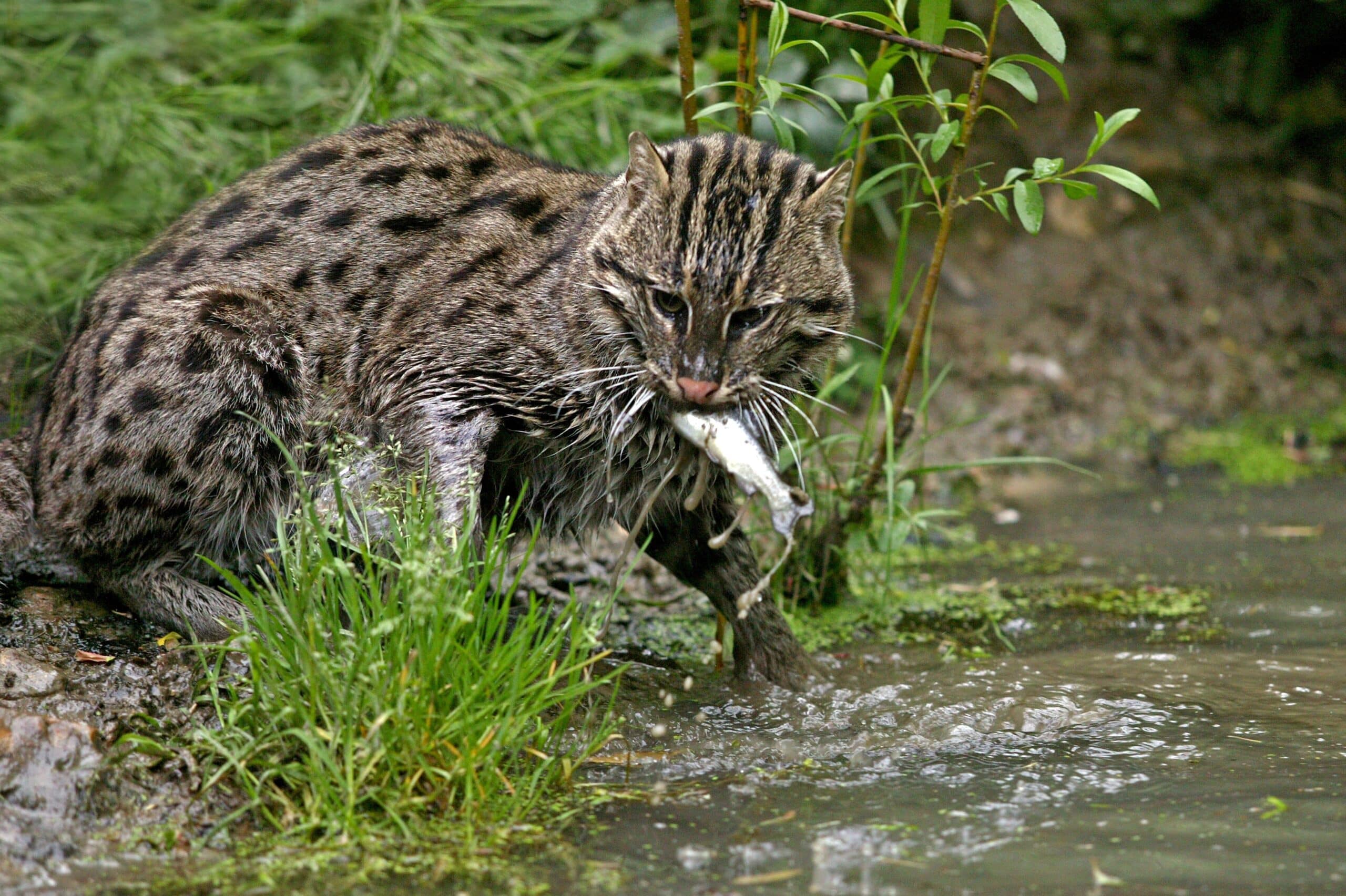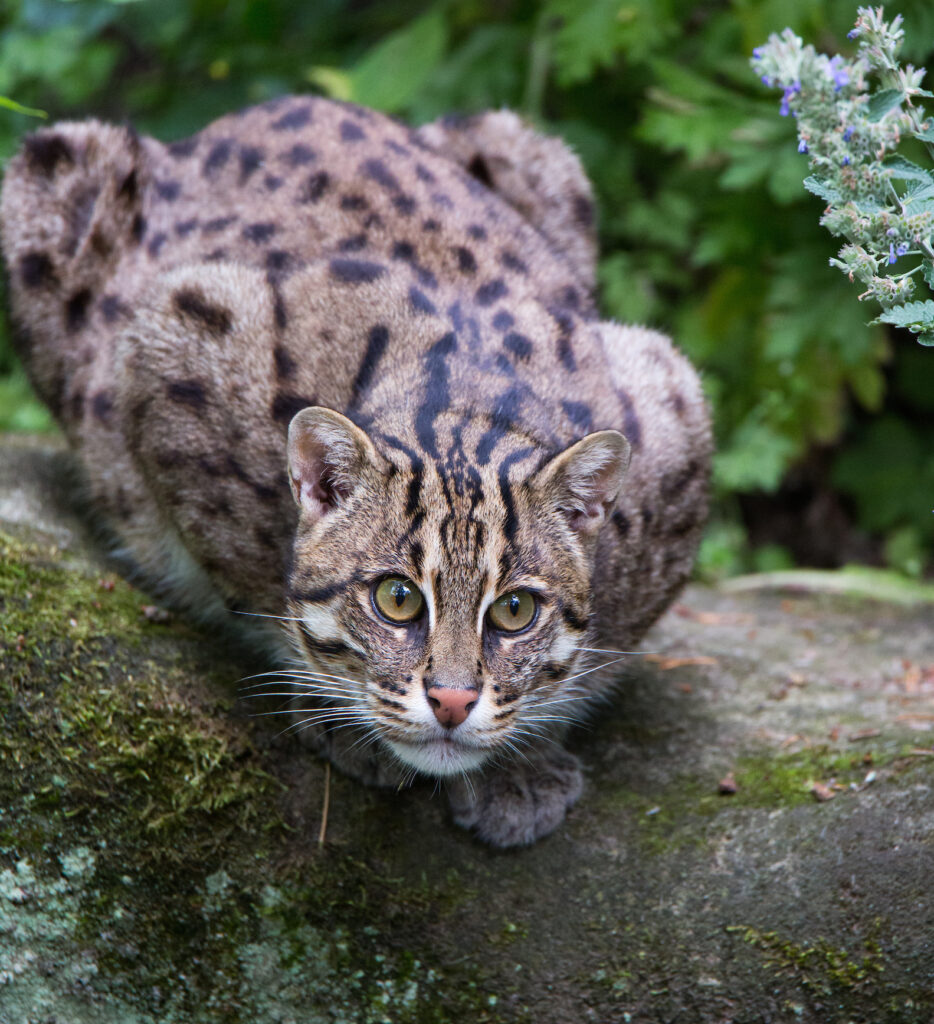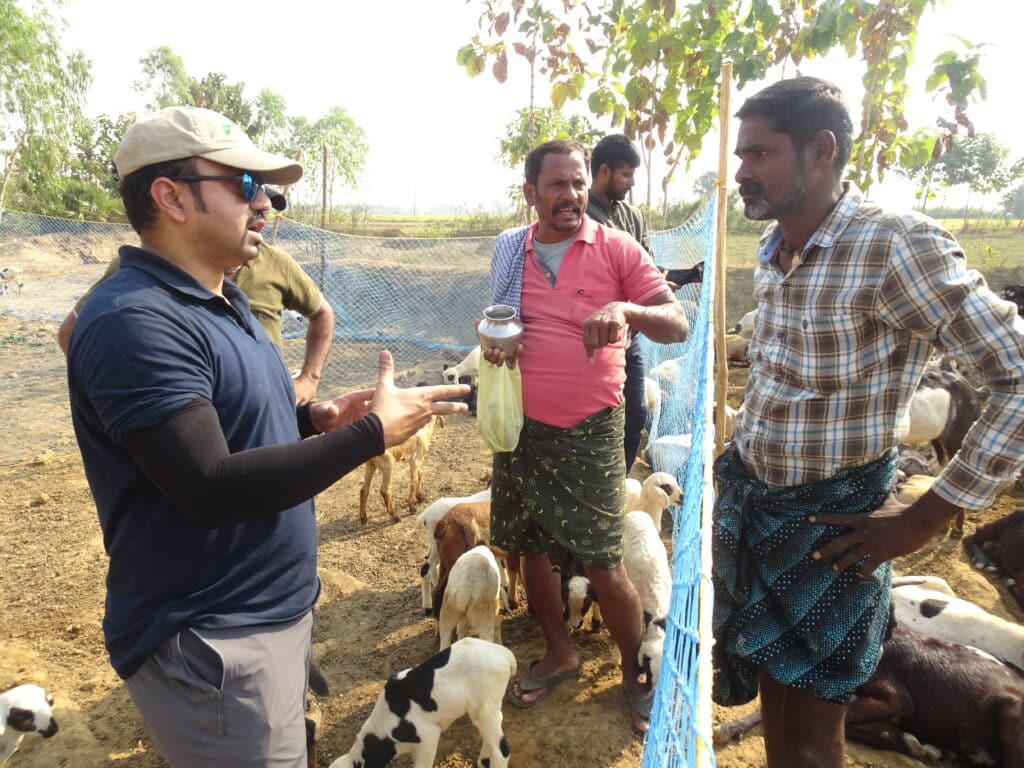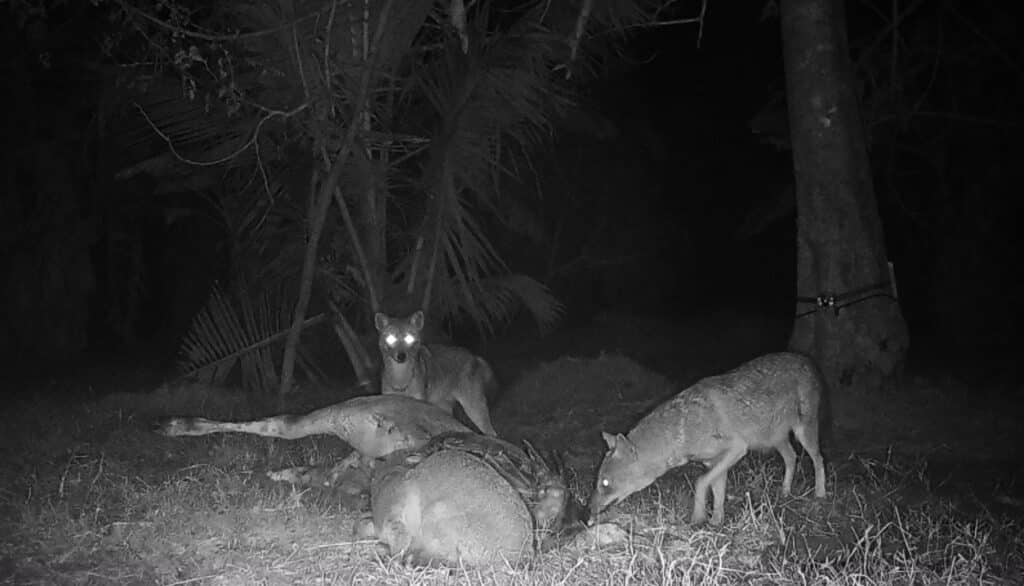The afternoon heat draped across Murthy Kantimahanti as he entered Baruva, a village in the South Indian state of Andhra Pradesh. He gently pushed through the murmuring crowd gathered at the corral, revealing the body of a goat killed the previous night. Baruva and several other villages had been plagued by livestock predation for nearly three months. Murthy, founder of the Eastern Ghats Wildlife Society (EGWS), a partner of the Small Wild Cat Conservation Foundation, had been contacted by the state forest department to help identify the predators behind these killings. Villagers believed that nearby fishing cats were to blame, but Murthy had doubts about their prime suspect. To exonerate these vulnerable wild cats and ease rising tensions, EGWS set about solving this murder mystery.
Since locals regularly spot fishing cats in the rivers and wetlands near their homes, they naturally thought of them when the trouble began. While livestock predation from wild cats is not uncommon, fishing cats, as their name suggests, primarily dine on fish. One of EGWS’ main focuses is protecting the last remaining inland populations of fishing cats in Andhra Pradesh by mitigating conflict with local communities and assessing threats like poaching, habitat loss, and retaliatory killing. Conservation requires working with local people to find solutions to certain problems so that they can more easily coexist with wildlife, so Murthy and his team knew that in order to prevent retaliation against fishing cats, which have no legal protection in this region, they had to stop the attacks on livestock.
With over 20 goats, sheep, and calves lost over the course of this spree, EGWS had to act fast to temper hostilities. Up until now, authorities had quickly disposed of the dead livestock after each incident, but what they didn’t know is that carnivores will often return to a carcass multiple times to feed. By removing each kill, they prompted additional attacks to occur. To identify which predators were responsible, Murthy’s team set up camera traps around one of the more recent carcasses that hadn’t yet been moved. It wasn’t long before the cameras unmasked the culprits—a pair of golden jackals, which regularly visited the carcass at night. This surprised the villagers, who always considered jackals to be scavengers, not hunters. No new attacks occurred during the time they were allowed to feed from the carcass, proving that these jackals were the ones preying upon livestock. No fishing cats were ever recorded in the village on any of the cameras.
With the jackals discovered, Murthy’s team sought to help Baruva improve security for their livestock. They provided predator-proof fences, recommended purchasing dogs to guard their corrals, and helped community members apply for and receive compensation from the government for their losses. And to reassure them that they need not fear fishing cats, Murthy shared footage from nearby trail cameras of their fishing cat neighbors staying near water sources, not their livestock.
While livestock predation may still sporadically occur, Murthy and EGWS stand ready to help Andhra Pradesh communities reduce conflict, avoid retaliation against innocent fishing cats, and learn to coexist with wildlife.




2 Comments